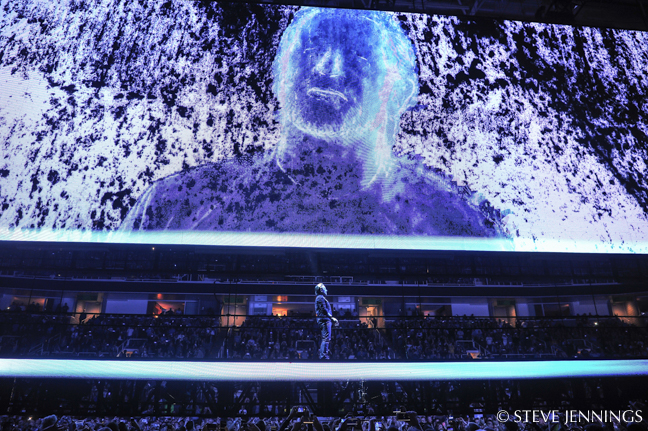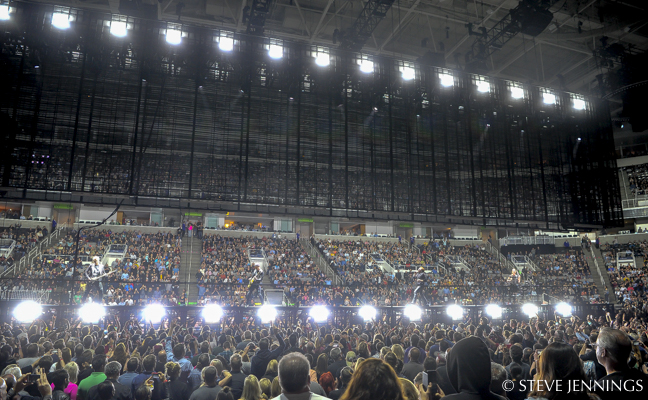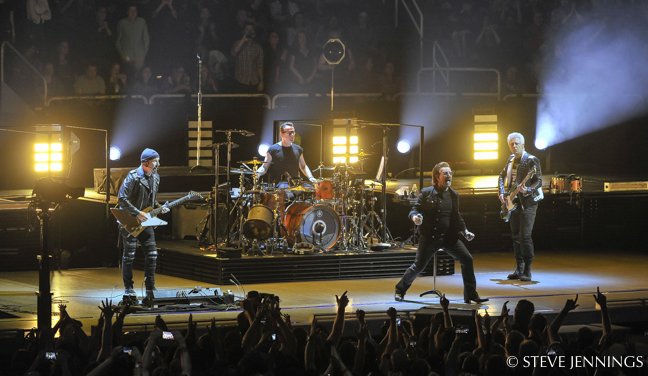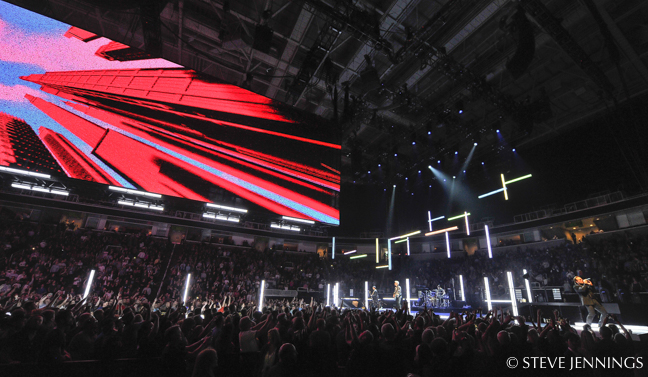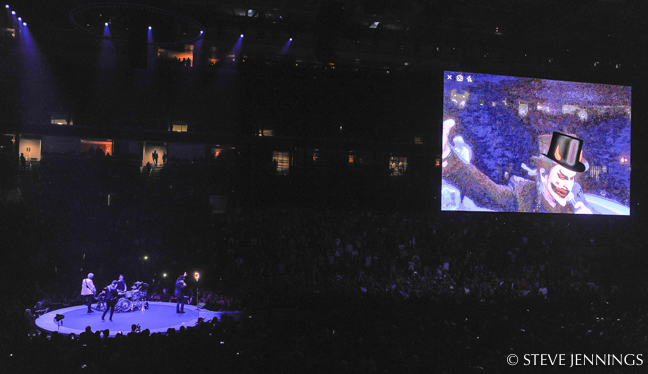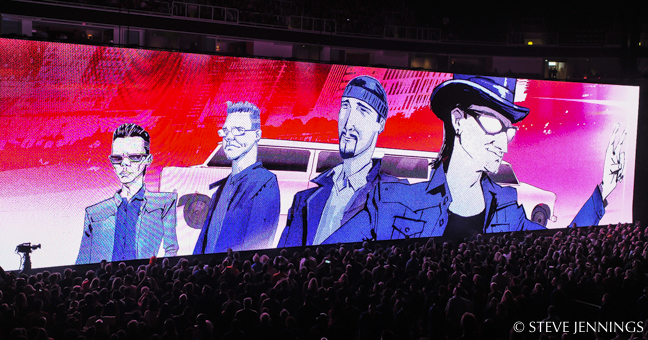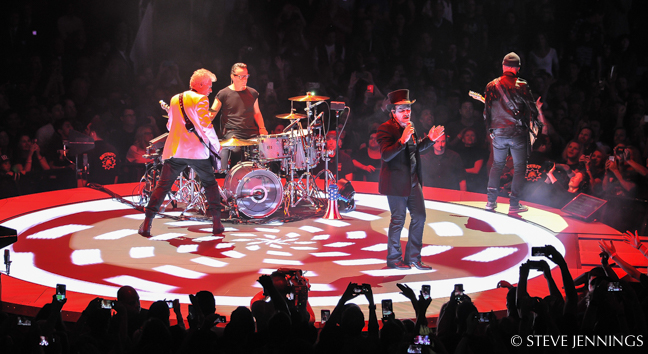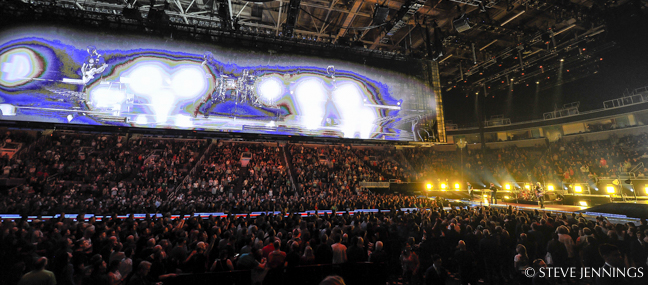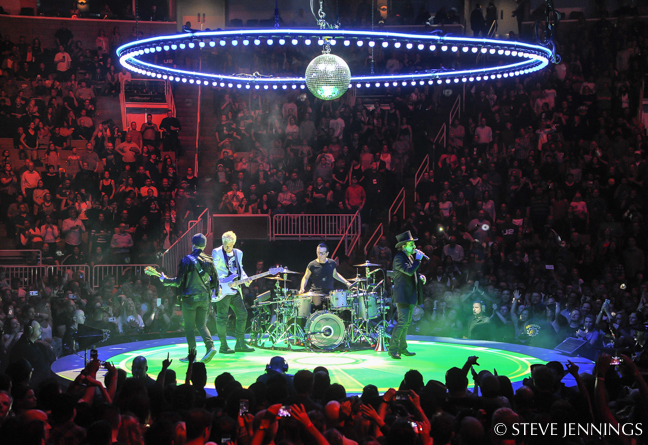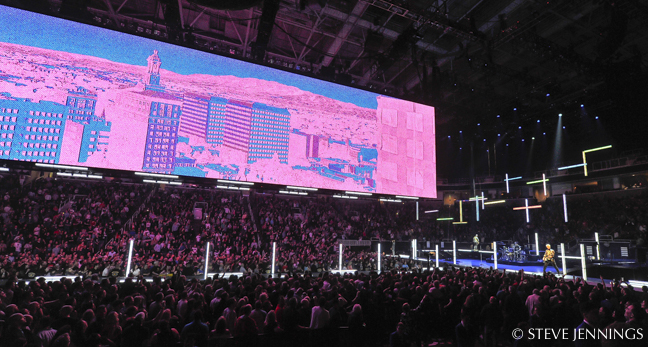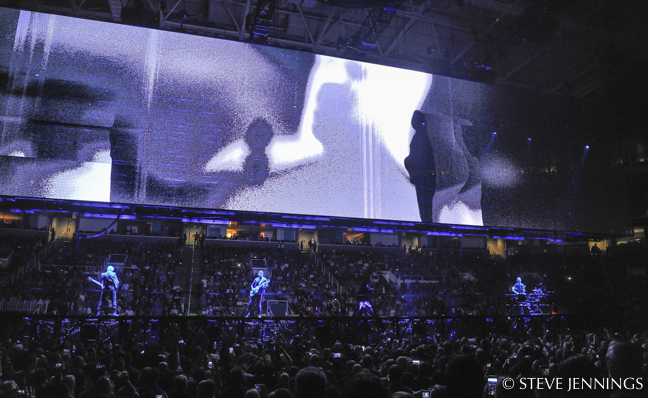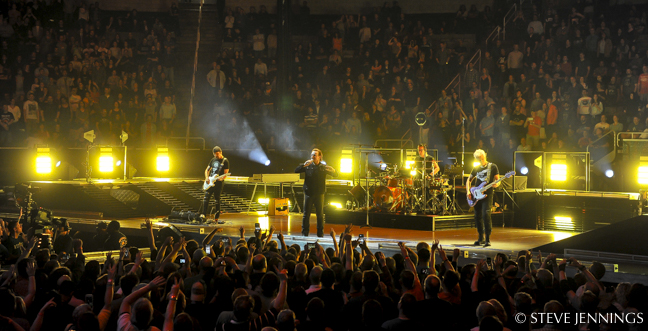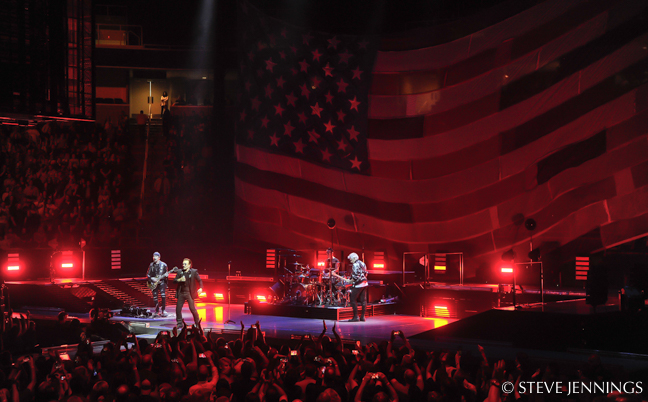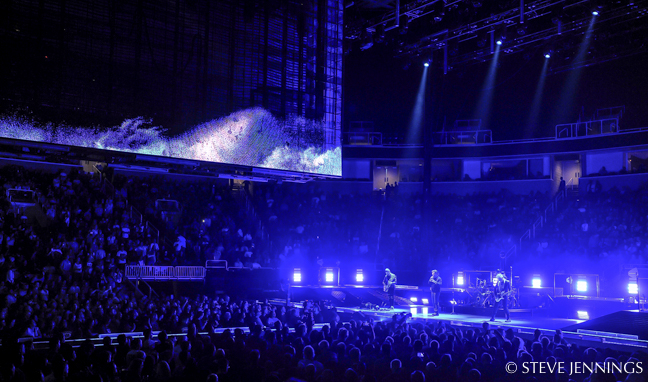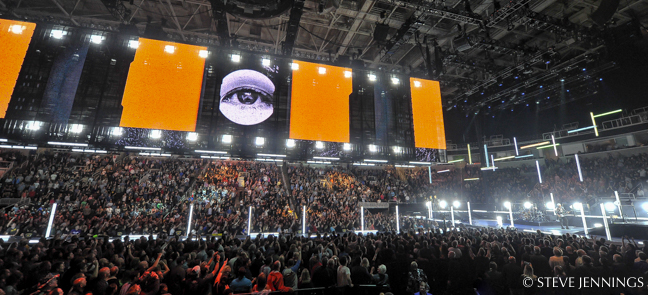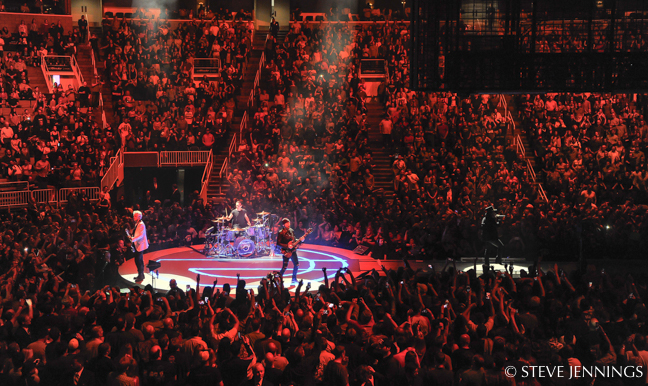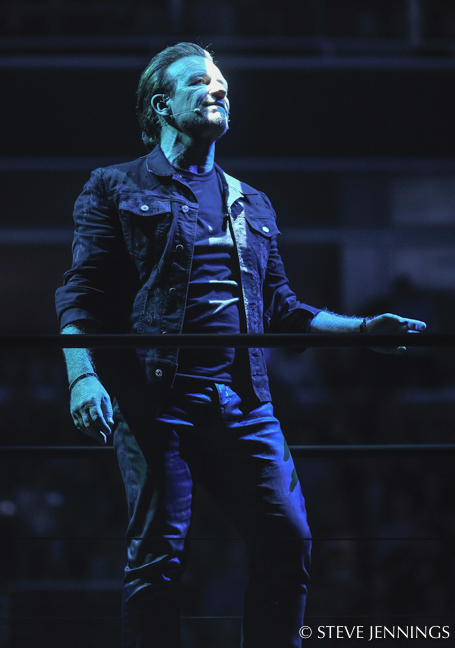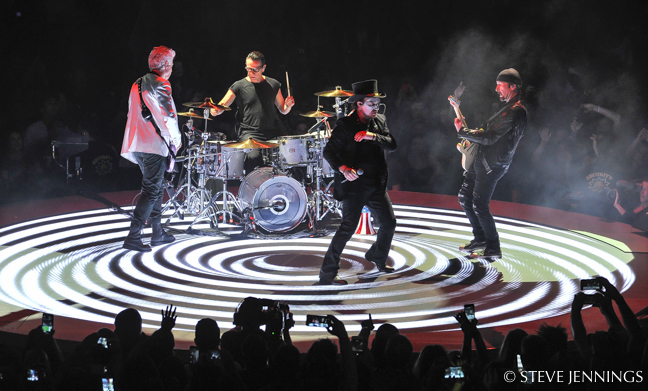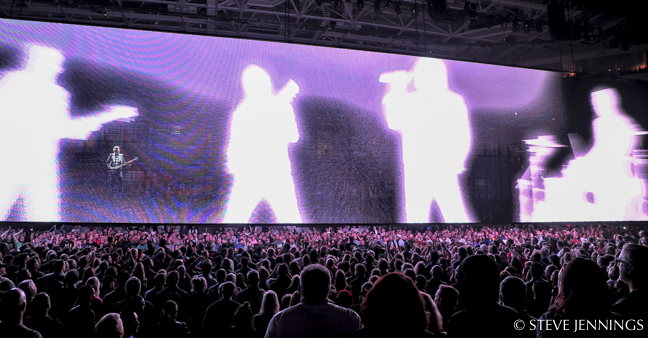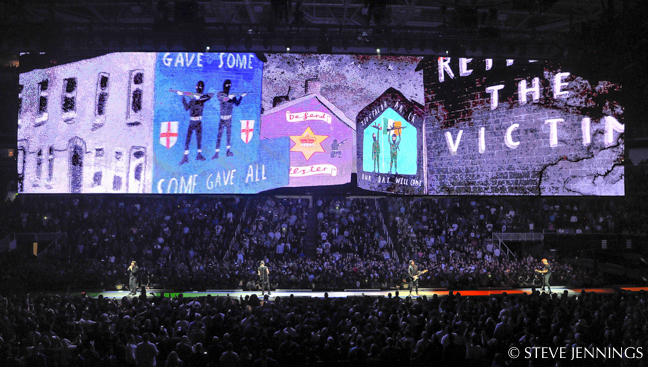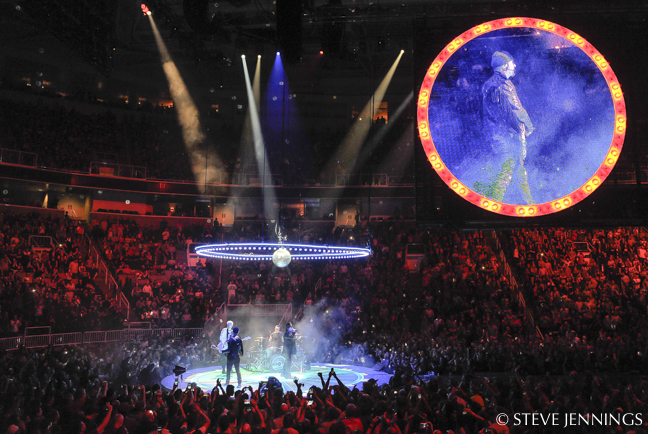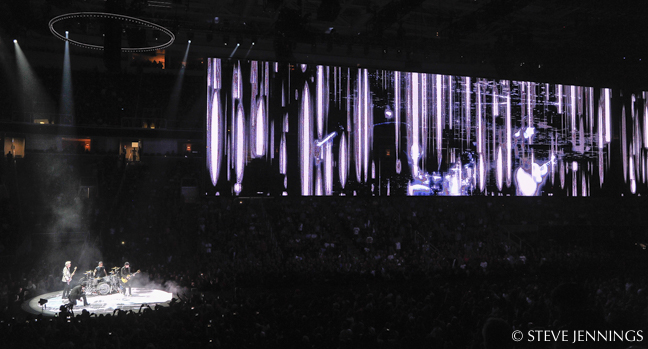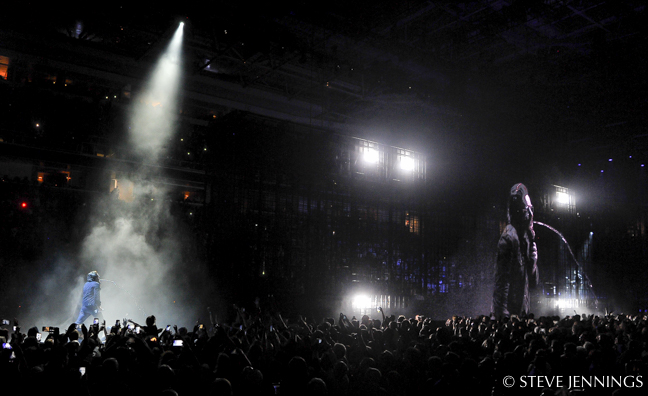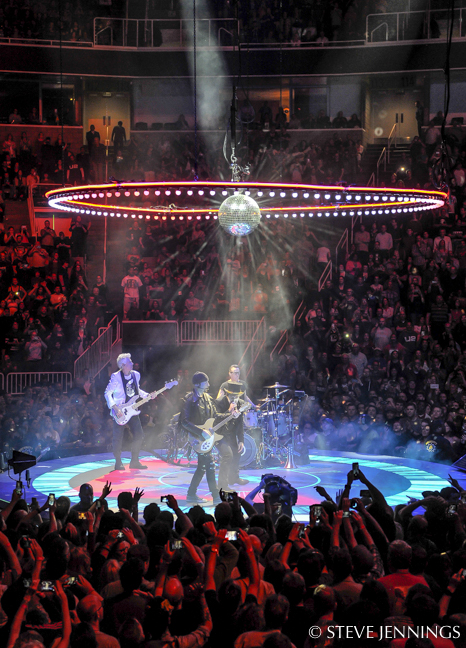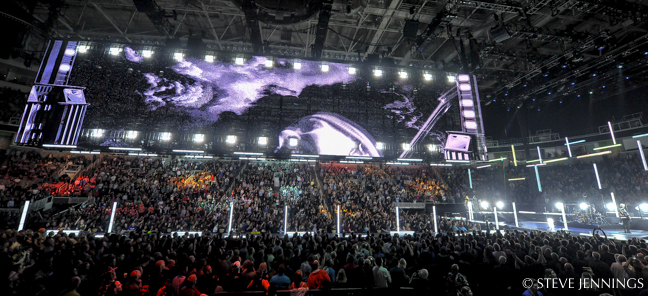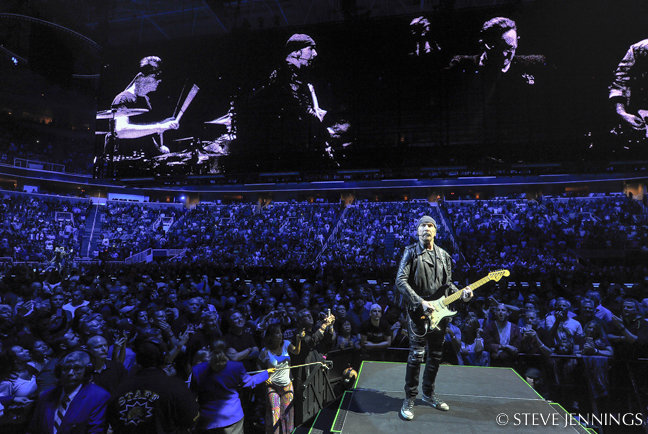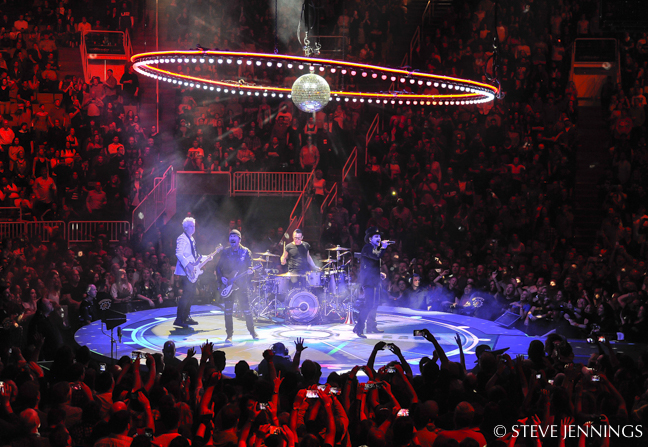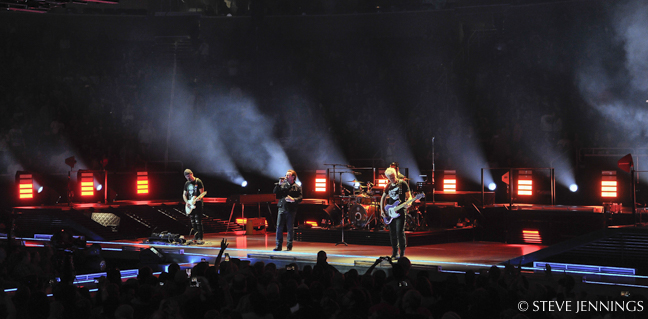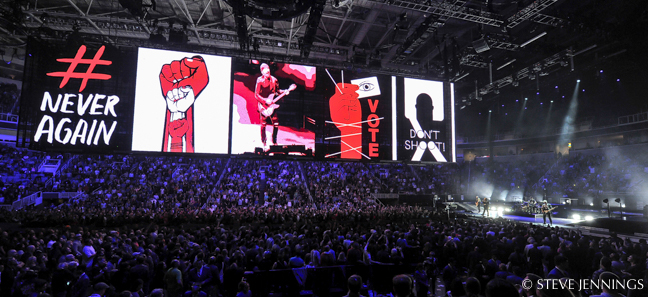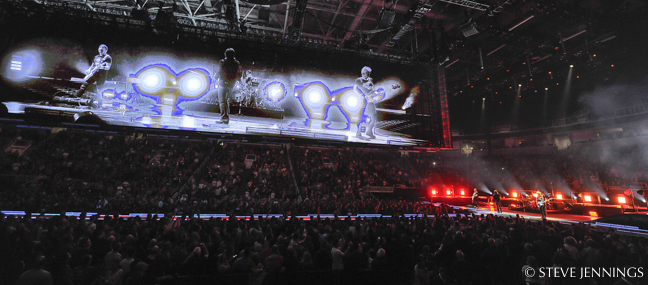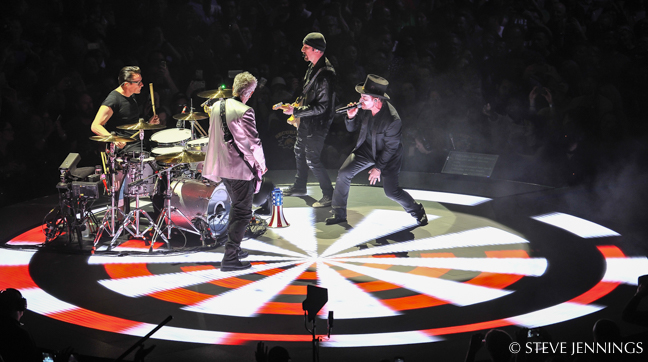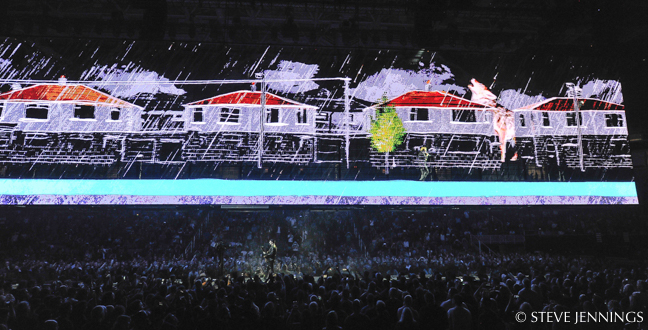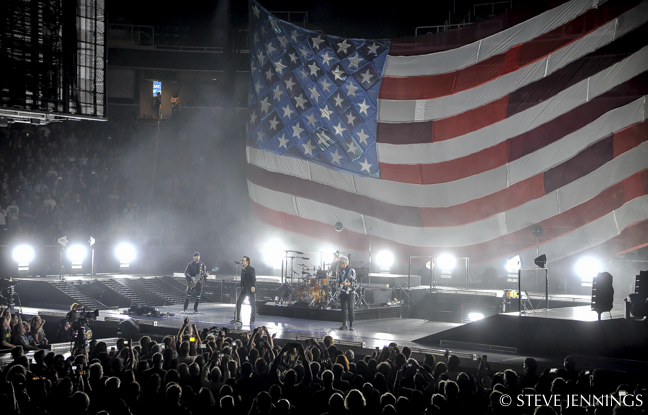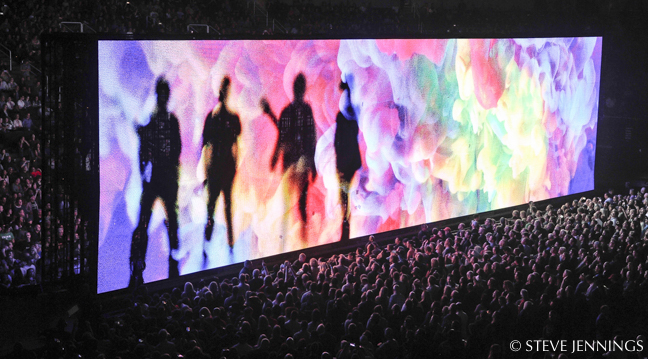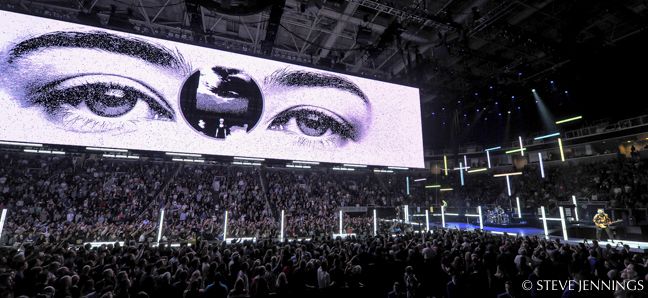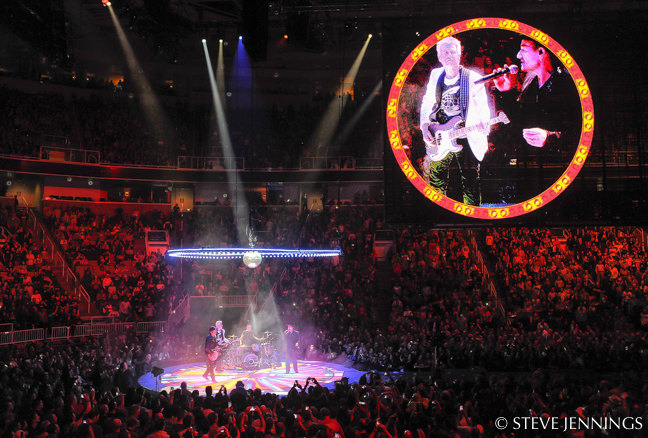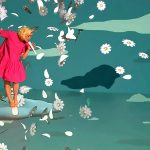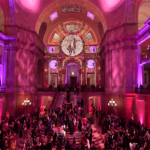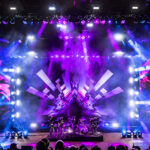The Band’s 2015 iNNOCENCE + eXPERIENCE Show Design Gets Updated with Impressive New Video Elements
Before their 2017 tour, which celebrated the 30th anniversary of their 1987 album release, The Joshua Tree, U2 had spent much of 2015 on the road with their iNNOCENCE + eXPERIENCE Tour, in support of their 13th album, Songs of Innocence, released in Sept. 2014. It had been the most elaborate tour for the Irish rockers since their epic three-year, 110-show 360° Tour from June 2009 through July 2011.
This year, the band is hitting the road once again, and since this year’s trek is in support of U2’s 14th album, Songs of Experience, released in Dec. 2017, the tour name has flipped; it’s now called the eXPERIENCE + iNNOCENCE Tour. (The companion albums pay homage to English poet, painter, and printmaker William Blake, who first published his illuminated collection of poems, Songs of Innocence and Experience, in 1789).

The resemblance between the 2015 and 2018 arena shows is not limited to the tour titles. Thematically and technically speaking, the new tour picks up where the 2015 tour left off, with a video cage structure that runs the length of the arena as opposed to where the LED wall usually resides, behind the band. But as we are about to explain, despite the similar look and feel of the shows, everything has changed in the way the system was designed, including new video panels that were developed by PRG Projects specifically for this tour, as well as a new system of video stage decks.

An eXPERIENCED Design Team
Jeroen Hallaert is originally from Belgium, but is now the director of PRG Projects for North America. PRG Projects is a small entity within the massive PRG group, tasked with the job of being innovators. The team he is part of has been involved with the band U2 since 1992 when they went out on their legendary Zoo TV tour, the one which changed how all acts would utilize video in their live performances going forward. Back then, video at concerts was relatively new and considered essential for I-Mag at stadium shows so the cheap seats could see the performers up close. U2 set out to do something completely different at that time. It was showing media content, often abstract and little to do with the lyrics, while other times the content was literal and tied to the message the band was trying to purvey.
Hallaert deals directly with the band’s designer Willie Williams as well as Rick Lipson from Stufish and Es Devlin, who are responsible for the overall creative development and design of the show. PRG Projects’ job is to take their ideas and figure out a way to turn them into reality. In this case, as is often on U2 creations, they had to design something that previously did not exist.
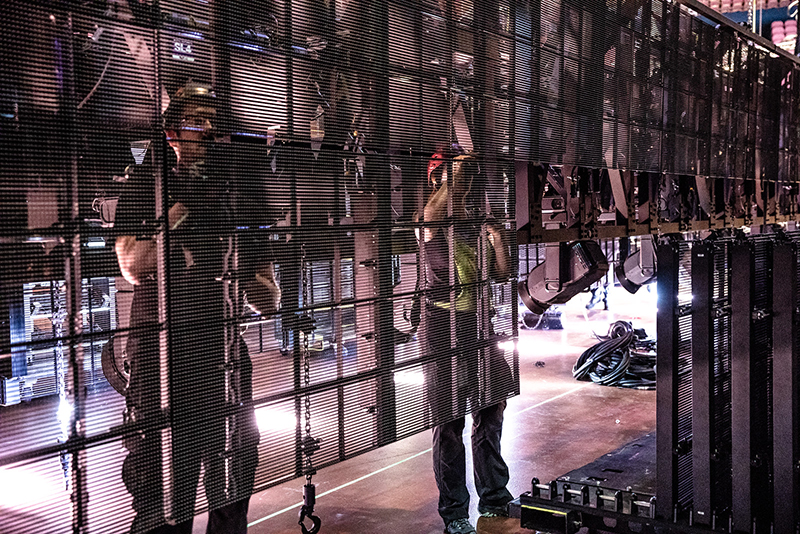
In 2015, the tour went out with a two-sided screen that ran the length of the arena and parked itself some 20 feet in the air over a 120-foot-long catwalk connecting the main rectangular stage to a circular B-stage, elevated so it would not impede audience sight lines. Each of those LED walls, made from 240 PRG Nocturne’s medium-resolution (28mm) SACO V-Thru product, measured 96 by 22.5 feet.
The catwalk let the musicians traverse the length of the arena at a higher level, allowing the band members to work inside this cage of video walls. Because the catwalk and video panels were one piece, extra motors had to be rigged to lift the catwalk into place. In addition, a stairway had to be wheeled into place so the band could ascend to that platform.

The technicians faced a few obstacles with this 2015 touring design. One was the sheer weight. The SACO V-Thru tiles each weighed over five pounds, and with a total of 480 needed for the double-sided video display, that added more than a ton of suspended weight. Another obstacle was that any time the band traversed this catwalk, they were always shrouded in the cage. Sure, they were visible, but the creative designers yearned for a better option. They wanted a higher resolution see-through LED product that weighed less, along with the option to lift it out of the way.
Hallaert met with the creative designers to discuss changes in the design that would facilitate the production in these matters. The first and most urgent thing to be addressed was the design of a completely new type of video wall with greater transparency and a higher quality image.

An Innovative Solution
Enter the patent-pending Pure10, PRG Projects’ solution to upping the image resolution and see-through quality of a product. “The first thing we did was decide to make the new product a 10-millimeter pixel pitch,” says Hallaert. “That immediately increased the quality of the images by almost three times better resolution than the previous model.” But in a normal scenario, this would lead to less transparency as the PCB (printed circuit boards) strips that the LEDs were attached to would have to move closer together, almost butting up like a normal LED cabinet.

The think tank’s innovative minds struck on a completely unheard of idea. “We thought to ourselves, what if we sliced the PCB into thin strips, then turned them 90° and place the LEDs themselves on the side of them,” Hallaert explains. Picture a set of venetian blinds turned to the open position. The human eyeball ignores the little slats and concentrates on the big picture beyond the screens. Basically, all the viewer would see are the LEDs themselves. Thus, Pure10 is able to offer 75 percent transparency, and the LED wall no longer seemed like it was dividing the arena population into two separate groups. The new panels are rectangular, each measuring one by two meters in size.
Last year, PRG Projects in Belgium released their revolutionary SpaceFrame system, which uses light-yet-rigid carbon fiber frames to connect video tiles together while offering great protection against wind loads. The PRG Projects team incorporated that knowledge into the engineering of these fast-erecting panels, further reducing their weight by close to two pounds per square foot. The new tiles are also about one-fourth the thickness of the previous model, meaning the crew could stack more of them in the touring dollies. The dollies can stack two-high to save on truck space, and the design also makes it easier for them to fit in the lower level of a transport plane. Another bonus to this system is that the headers used to attach the tiles to truss are tiny in comparison to older models. Pickup points for the large video wall are two meters apart.
With the new screen being much lighter than the previous one, it is mounted to a Tait system of winches that not only raises and lowers the “barricage,” as the band calls it, but also the catwalk itself moves independently inside between the two video walls. The catwalk itself now can reside on the floor with the Pure10 lowering down into place to enclose the musicians at times. This solved the problem with weights, plus they got to lose the movable stairway.
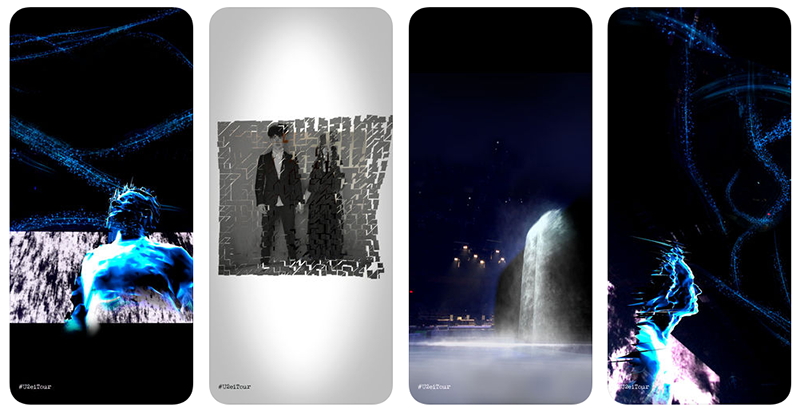
Augmented Reality
Willie Williams and the band were adamant about incorporating the use of an Augmented Reality (AR) effect into the show as another tool for storytelling. AR on the phone is commonplace now, but they became intrigued about doing it on a large scale. It is triggered by visual markers in the screen and its content.
The show starts in a rather unique way. Fans are asked to download the U2 AR eXPERIENCE app before the show starts. Then, for the first song, Bono and company are dimly lit, and the crowd is encouraged to view the performance through their phone screen. The phone adds imagery to the scene, and the audience is treated to an intimate moment with Bono. The digital image of the singer appears as an avatar, looking over the audience. And while the giant, ghostly image of Bono that it produces on your phone is pretty neat, what is even cooler is that it drains your battery with stunning speed — which works as a gentle encouragement to put your phone away for the rest of the night. After the first song, the concert is all about the live performance.

The Rolling Floor Riser
At the end of the catwalk sits the circular B-stage. At times, the band plays together; at other times it separates, and musicians span the entire stage. New this tour is the high-def LED floor that occupies the circle. The floor is created by Rolling Video Floor Risers developed by PRG Projects to meet the short setup and changeover times of LED flooring for the concert touring and festival industries. For this show, the square shaped tiles are masked around the edge to make the LED stage appear perfectly round.
The Rolling Video Floor Riser is a revolutionary system in how it’s built and disassembled. Initially revealed last year, PRG Projects updated and upgraded it for U2 to be used as the round stage. Each rectangular riser is fitted with two ROE Visual Black Marble LED modules, offering a high resolution 4mm pixel pitch during performances. Each riser has integrated magnets to enable a speedy assembly — an LED Floor of up to 1,076 square feet can be set up in less than 20 minutes.
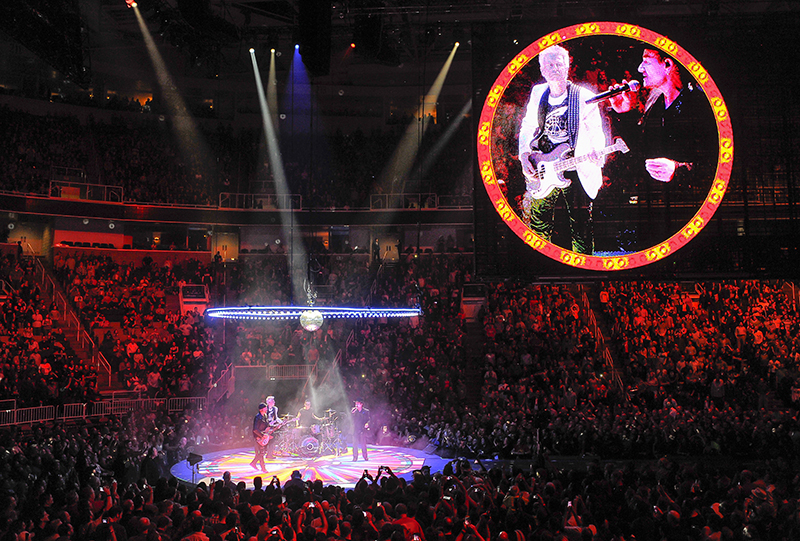
Not only do the Rolling Video Floor Risers dramatically reduce the set-up time for an LED floor on stage, they also are transported in custom-designed dollies, which hold six risers each. The dollies are 1.6 meters in height, allowing for shipment via airfreight on the lower deck, which allows for a significant reduction in shipping costs.
The eXPERIENCE + iNNOCENCE Tour launched with a series of shows in major North American markets from May 2 to July 3 before the band’s trek resumes in Europe as well as the U.K. and Ireland from late August through early November. (For more details, visit www.U2.com).
More U2 tour photos by Steve Jennings:
